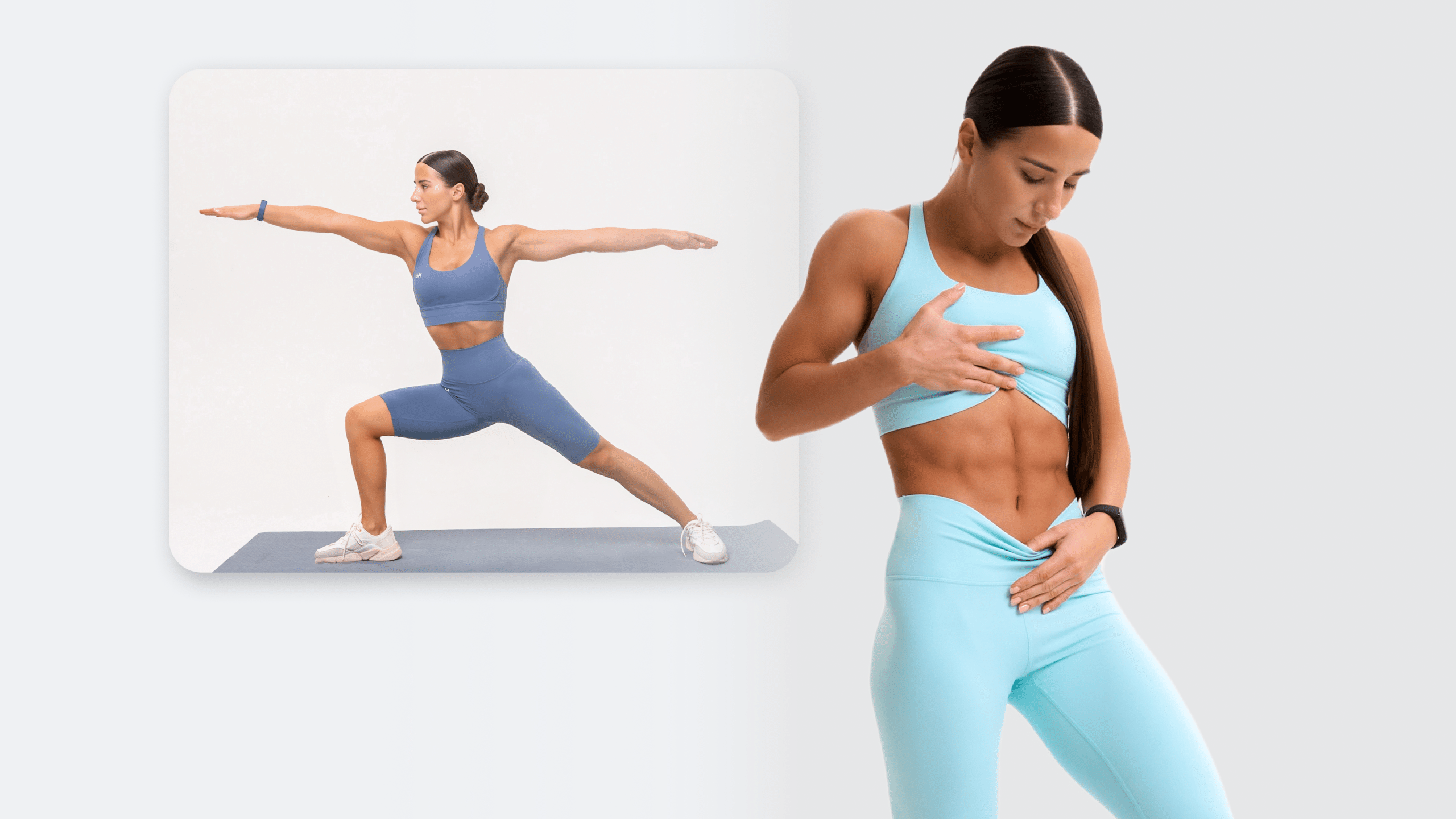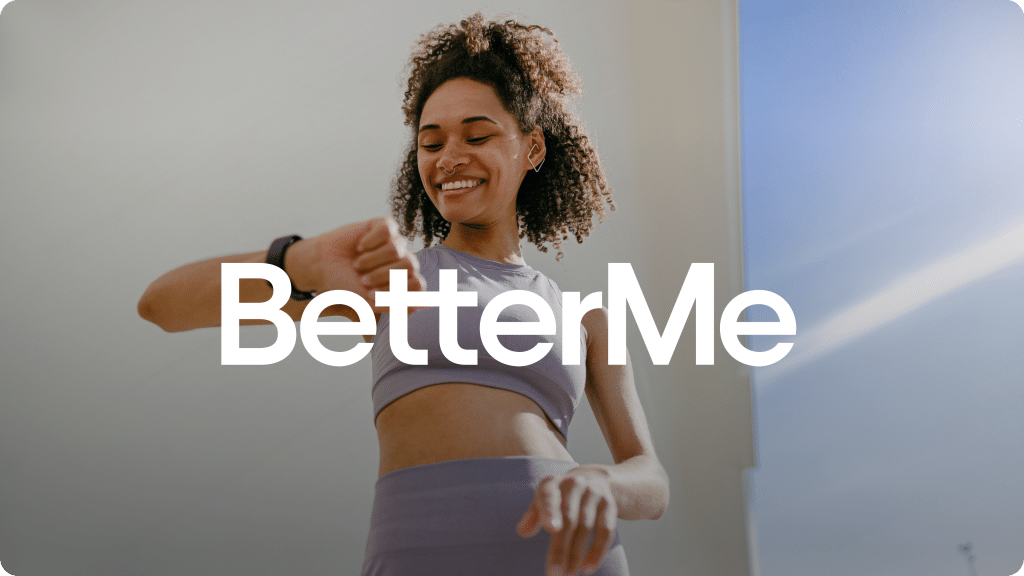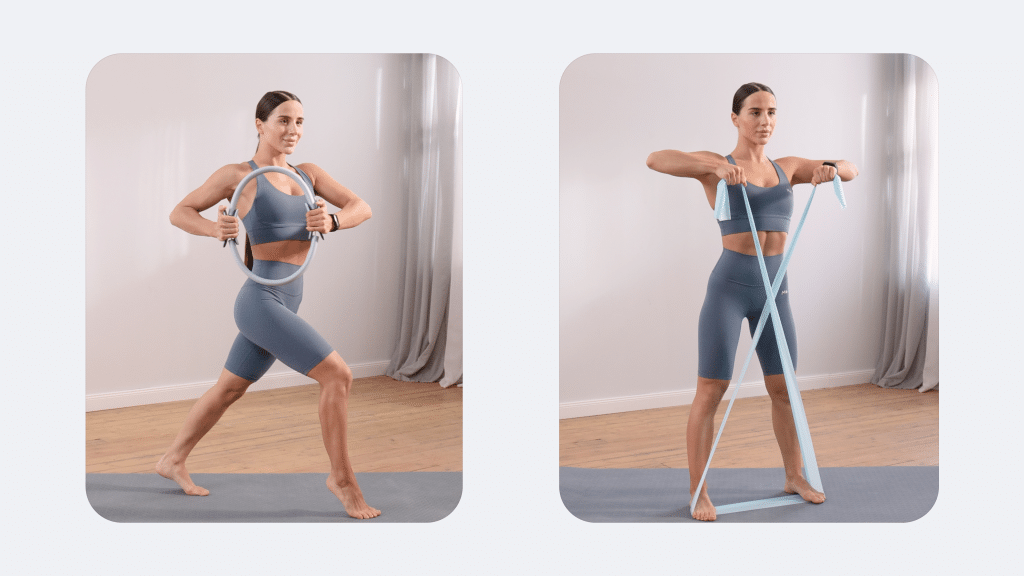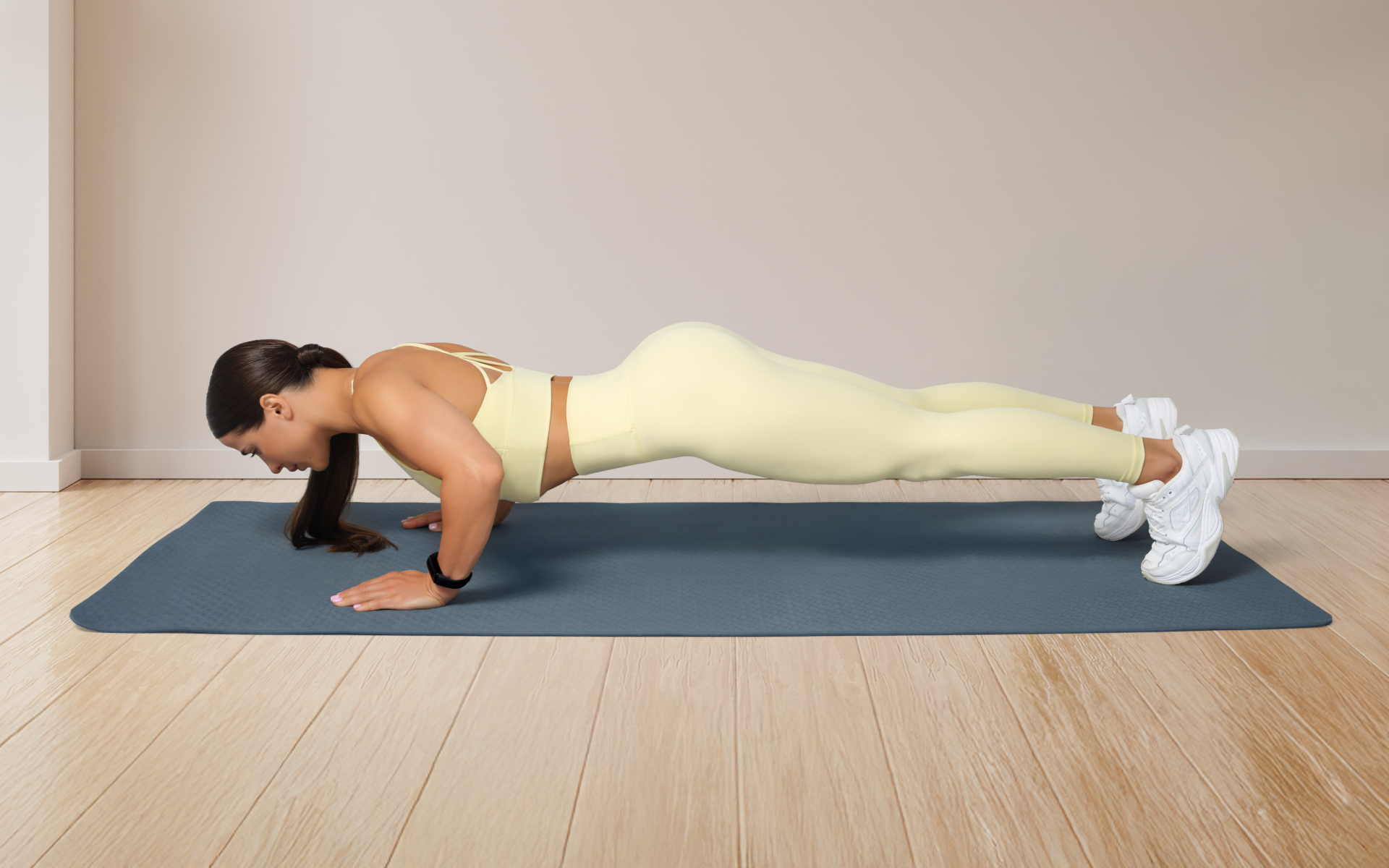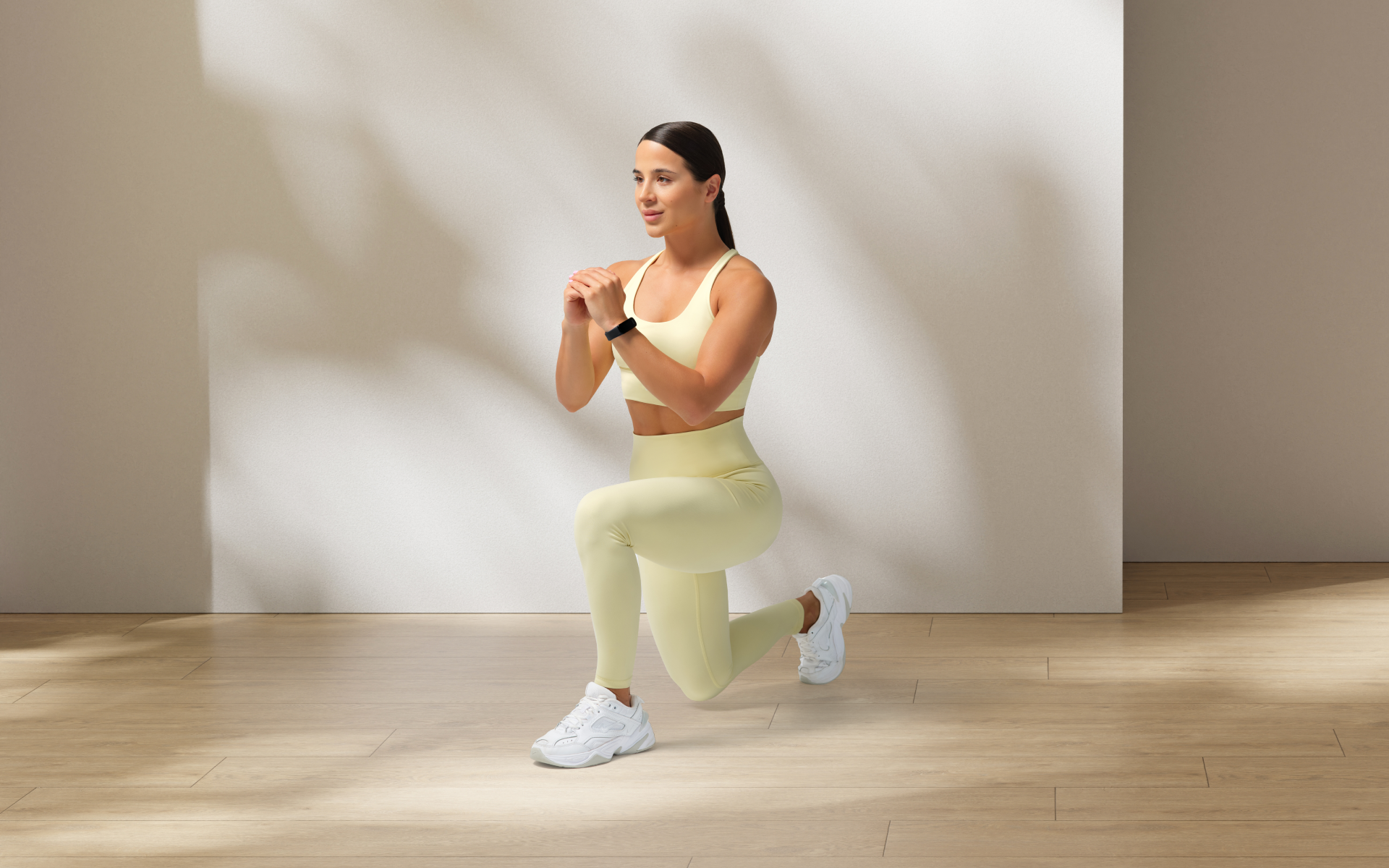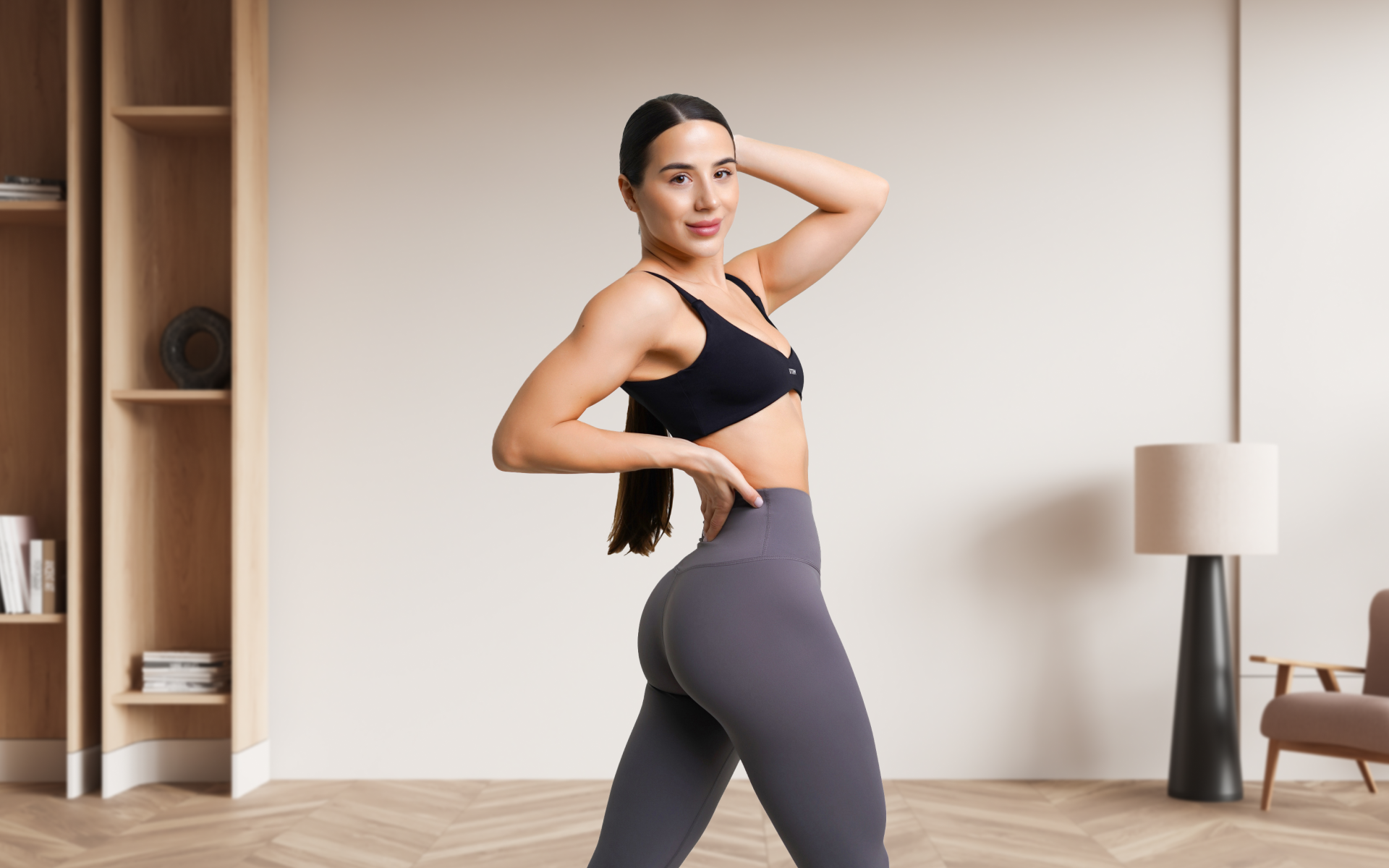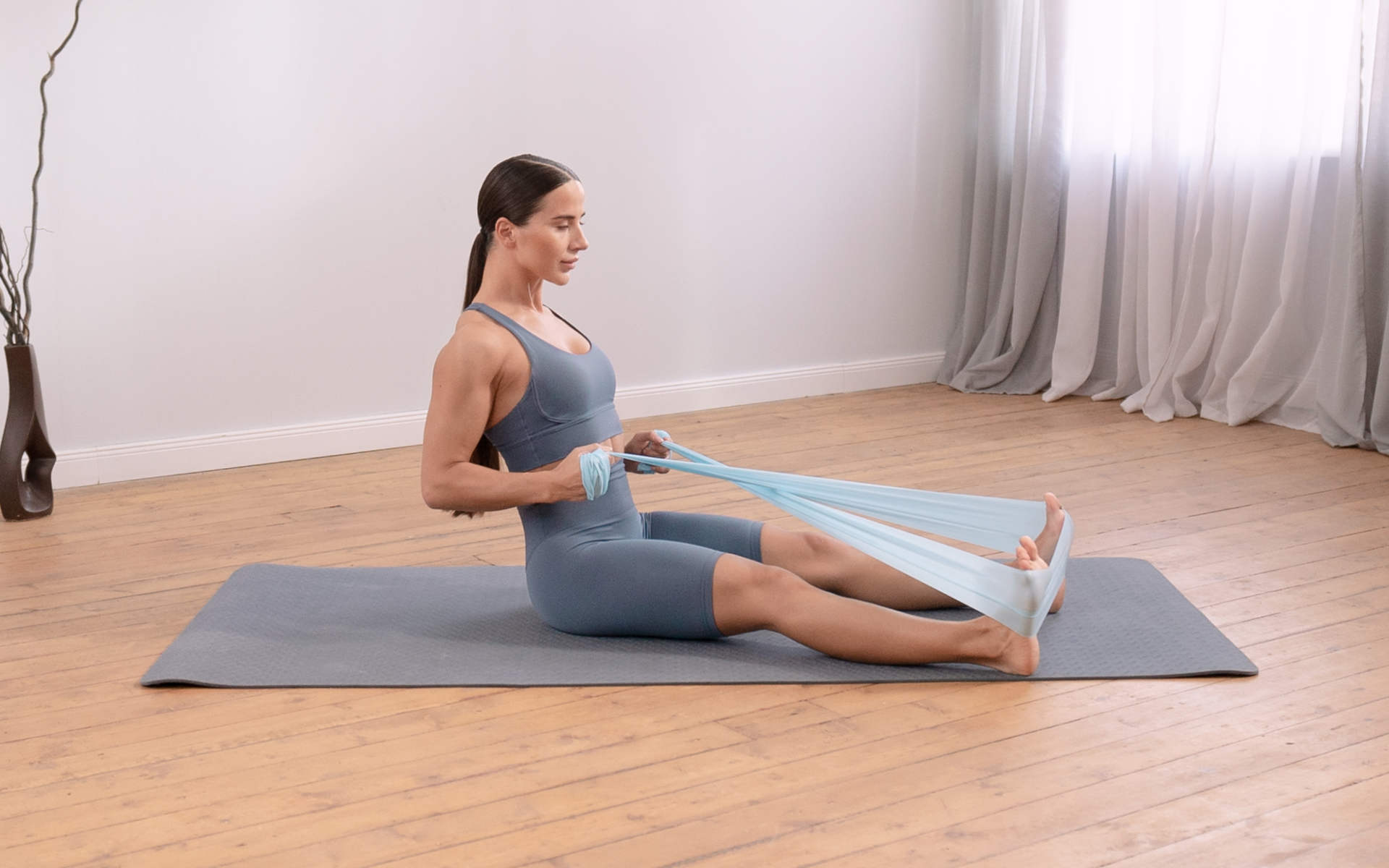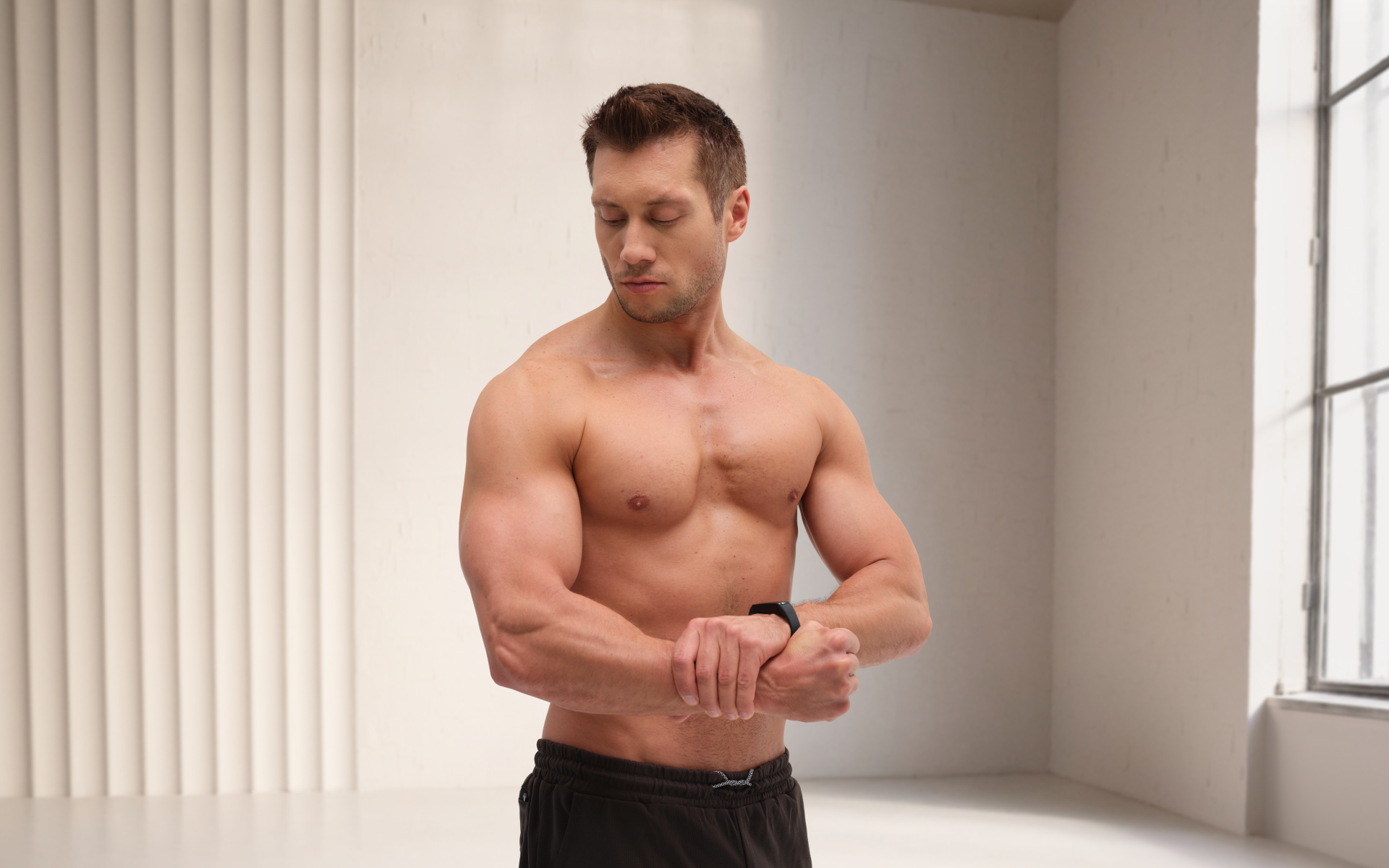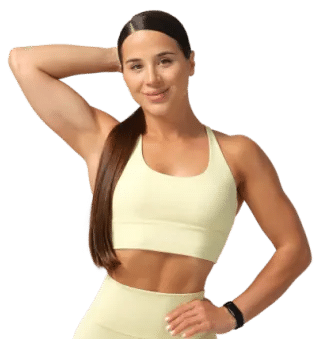Do you wish there was a way to get personalized fit while at home? Look no further, because an At-Home calisthenics workout plan for beginners could be the ideal solution for you. Calisthenics focuses on bodyweight resistance, which is an efficient way to begin your fitness journey without the demand of heavy and sophisticated home fitness machines. A calisthenics workout plan is much about the basics, such as squats, push-ups, lunges, and planks, which progressively increase your strength, range of motion, and stamina. Be prepared to take a step toward actual fitness at home with a calisthenics workout plan, which will not only just aid you in toning but could also keep you healthy in every way.
Here’s your A to Z guide that will help you get on the path to being stronger and more fit, all from the comfort of your own home.
Can you build muscle with only calisthenics?
You can definitely build muscle with an at-home calisthenics workout. Even though it does not require any equipment, you can still see muscle gains throughout your entire body! The reason for this is that your body weight acts as the working weight, rather than a machine or a dumbbell! You might believe that working out with free weights would enable you to accrue more muscle, but body weight is, in reality, just as effective at boosting power and muscle mass.
With a well-structured calisthenics workout plan, you can target various muscle groups effectively by incorporating exercises like push-ups, pull-ups, squats, dips, and planks, among others. Whether you use unconventional exercises, lift weights, or perform calisthenics, the principles of muscle building remain the same. Giving your body a stimulus (load) and doing it frequently enough (reps, sets, and training frequency) are essential for building muscle.
A study conducted in 2018 discussed the similarities of calisthenics workouts to weighted workouts. “The main finding of this study was that the utilization of progressive push-up variations increased upper-body strength, comparable with the bench press exercise by eliciting the intensity needed to maintain strength training variables.” (6). This indicates that calisthenics workouts would be just as beneficial to improving strength on a lift like the barbell bench press.
If your goal is to gain muscle without using any equipment, a calisthenics workout plan is a great way to develop a strong, trim body.
BetterMe App helps you achieve your body goals with ease and efficiency by helping to choose proper meal plans and effective workouts. Start using our app and you will see good results in a short time.
Benefits of At-home Calisthenics Workout: (1)
- Convenience: For those who have time restraints, at-home calisthenics offer an option in contrast to going to the gym. A calisthenics workout plan is not difficult to follow without requiring any equipment, making it a useful decision for at-home workout schedules.
- Cost-effectiveness: Gym memberships can be expensive. They also come with time constraints that limit freedom. On the other hand, choosing at-home calisthenics saves money because it only uses your body weight for workouts. There is also no need to wake up at a specific time to get to the gym before!
- Functional Strength: Compared to other exercises, at-home calisthenic workouts are more beneficial. A calisthenics workout plan mimics your natural body motions, which not only keeps you healthy but also improves your performance in other sports and daily tasks.
- Versatility: Due to their convenience, calisthenics workouts can be done by anyone regardless of age, body type, and previous fitness experience.
Muscle Building with Calisthenics:
- Progressive Overload: Calisthenics and weight lifting have the same formula. In the long run, a calisthenic workout plan forces the muscles to grow and adapt in a similar way to weight lifting (6).
- Compound Exercises: At-home calisthenics is not as easy as it sounds. It comprises compound exercises that target specific muscles and put pressure on them.
- Muscle Contractions: The plank demonstrates how calisthenic works. When you hold the plank, your muscles will be forced to tighten in order to keep your body in a fixed position. Most calisthenics exercises are static, which helps the muscles grow and become stable. (3)
- Variety and Creativity: If you’re worried about calisthenic exercises being dreary, you’re off-base. A calisthenic workout plan comprises various activities that you can continue adding or changing in your daily practice.
Designing a Calisthenics Workout Plan (8):
- Exercise Selection: Choose a calisthenic workout plan that includes all of the muscle groups or focuses on a specific muscle. You can also vary your plan every week to avoid boredom.
- Assess your Fitness Levels: Before starting any workout plan, it’s essential to evaluate your current fitness level and your overall wellness goal. This assessment will help you understand your strengths and weaknesses, allowing you to create a plan tailored to your needs. You can perform simple tests like push-ups, pull-ups, and squats to gauge your fitness level.
- Track your Progress: Record the exercises, sets, and repetitions for each workout, along with notes on your performance and any improvements you’ve noticed. Regularly reviewing your training log will help you make adjustments to your workout plan as needed.
- Recovery and Rest: Muscle recovery and rest are equally vital as exercise. Take small breaks between exercises and listen to your body. If you are feeling too sore for a workout, feel free to take a day of rest and opt for a short walk instead!
- Consistency: Consistency is key. If you are inconsistent, no workout routine will produce the desired outcomes. Try to include your calisthenics workout plan into your daily routine, and aim to exercise at least four times per week.
Read more: The Simplest Lower Back Calisthenics Guide for Beginners
Can I do calisthenics at home?
Incorporate a 30-day calisthenics workout plan for beginners in order to do calisthenics at home. This structured program is specifically designed for people who are new to calisthenics and offers a gradual progression of exercises to help build strength, improve technique, and improve overall fitness levels—all from the comfort of your own home.
Whether you have limited equipment or none at all, this free calisthenics workout provides a comprehensive approach to getting started on your fitness journey and the potential to see meaningful results within a month. An at-home calisthenics workout plan for beginners will give you all the results you want from the comfort of your home.
Benefits of Doing Calisthenics at Home: (15)
- No Equipment: One of the primary advantages of performing at-home calisthenics is that there is no need for weights or other heavy equipment. You can work out anywhere, anytime, without having to commute to the gym.
- Helps You Move Better: Calisthenics is one of the most effective kinds of functional training. It makes you not only appear fit, but also feel fit. Aside from muscular gain, it improves overall functionality and mobility.
- Privacy and Comfort: Working out at home tends to be more preferable to working out at a busy gym. At-home calisthenics workout allows you to exercise in private without leaving your comfort zone.
- Flexibility: At-home calisthenics workout can never get boring. It allows you to change your schedule as and when required. You can target different muscles by changing the routine weekly.
- Minimal Space Required: Even if your home does not have much room, a calisthenics workout plan allows you to exercise. You may workout anywhere, including your bedroom, because no equipment is required.
Getting Started with Calisthenics at Home: (2)
- Assess Your Fitness Level: Do not immediately begin compound exercises that may strain or injure your body. Determine your current fitness level and body strength.
- Start with the Basics: Begin with basic calisthenics exercises like push-ups, squats, lunges, planks, and pull-ups. These exercises will prepare your body for a more complicated routine.
- Create a Routine: Create a calisthenic workout plan that is appropriate for your body type and will help you reach your goals. Seek advice from a fitness specialist or look online for calisthenic exercises that can help you target the muscles you want.
- Stay Consistent: Consistency is key. No workout plan will be able to show you the results you desire if you’re inconsistent. Try to fit your calisthenics workout plan into your everyday routine and aim to workout at least 4 times a week.
- Listen to Your Body: Do not force your body or try to push your limits, especially if you are experiencing extreme pain and discomfort that lasts days.
If you wish to free yourself from all the extra pounds that have been weighting you down for way too long, start using the BetterMe app and overhaul your entire life!
Are 100 pushups a day good?
While pushups are one of many great calisthenic workouts, it is important to consider all the factors before starting with 100 pushups a day.
While pushups are a great exercise to build your core and upper body strength, relying only on that one exercise won’t help you achieve your goals. (12) The best calisthenics workout plan is inclusive of all exercises that target every muscle. Squats, lunges, pull-ups, dips, planks, and leg raises can all contribute to a more balanced workout that promotes overall strength, flexibility, and cardiovascular fitness.
Here are a few factors you need to consider before starting with 100 pushups a day.
- Progression: Do not directly start with 100 pushups especially if your body is not used to regular exercising. Start with a few reps initially and then slowly progress by increasing the number. Let your body get used to it in order to avoid any injuries. If you can’t do 100 in a row, feel free to break it up into chunks that are manageable for you! You could do 5 in a row, then take a rest, and then get another 5 in. Then just repeat this process until you get to 100!
- Variety: While 100 pushups a day will develop your core, relying solely on one exercise won’t help. Include other at-home calisthenic workouts to target every muscle and increase strength.
- Form and Technique: The number of push-ups doesn’t matter as much as the form. If the form is incorrect, regardless of the number, it won’t show any results. Your form needs to be perfect with every push-up and if that’s a challenge, try reducing the number of push-ups.
- Recovery: Allowing your body to recover is just as important as exercising. Be sure to take breaks in between sets and also take rest days. Your body needs time to recover in order to perform, especially for calisthenic exercises that rely solely on body weight.
Finally, whether or not 100 pushups per day is “good” depends on how it fits into your overall fitness plan, your personal goals, and your ability to perform them with proper form and technique. (14)
Read more: Calisthenics Shoulder Exercises: Techniques and Workouts
FAQs
What is the 80/20 rule in calisthenics?
The 80/20 rule, also known as the Pareto Principle, is a concept used in many different fields, including calisthenics (13). As per this rule, 80% of your results come from 20% of your exercises. This means your workout routine needs to consist of the most effective exercises. It’s always quality over quantity.
The 80/20 rule can also be applied in calisthenics. You can get quicker and better results by incorporating key exercises that target multiple muscle groups.
Compound exercises, such as push-ups, pull-ups, squats, and dips, target multiple muscle groups at once, making them extremely effective for increasing strength, muscle mass, and overall fitness (7). Prioritizing these compound movements in your calisthenics routine will increase your training efficiency and result in significant improvements in strength and physique.
However, the 80/20 rule is simply a guideline rather than a strict rule. While focusing on key exercises can produce significant results, incorporating variety and addressing specific weaknesses or imbalances is also critical for overall fitness development.
Is 30 too late for calisthenics?
Age is never a barrier when it comes to exercising. Most people start their fitness journey in their 30s and calisthenics is in fact the perfect workout routine to start with. At-home calisthenics is especially good as most people in their 30s are working and may not have the time to hit the gym.
Calisthenics is the most convenient workout routine for all age groups and body types. Whether you’re 30, 40, 50, or older, calisthenics can improve your strength, flexibility, endurance, and overall health (9, 5).
Starting calisthenics in your 30s can be especially beneficial because you are more mature, disciplined, and aware of your body than when you were younger. This can lead to more focused and efficient workouts, as well as a greater ability to listen to your body and adjust your training as per your needs.
A calisthenic workout plan is the best for people in their 30s as it can easily be tailored as per your needs. You can add exercises to your routine or change your routine as and when you desire. Your maturity level also plays an important role as you’re more likely to follow the plan and remain consistent.
Ultimately, age is just a number, and it’s never too late to prioritize your health and well-being with calisthenics or another type of exercise. You can reap the many benefits of calisthenics at any age if you approach your training with dedication, consistency, and proper form.
Is calisthenics 3x a week enough?
The frequency of calisthenics workouts is determined by a variety of factors, including your fitness goals, current fitness level, recovery capacity, and overall lifestyle. While three times a week of training is sufficient for some people, others may benefit from more or fewer sessions per week.
A calisthenics workout plan of three sessions per week can be beneficial for beginners or those looking to improve their overall fitness and maintenance (10). This frequency allows for adequate recovery time between workouts while also providing enough stimulus to promote strength gains, muscle development, and overall fitness improvement.
However, if you want to gain significant muscle mass, increase strength, or improve athletic performance, you should increase the frequency of your calisthenics workouts to four or five times per week. (11) This allows for more frequent muscle stimulation, which may result in faster progress if proper recovery time is allowed and quality nutrition and sleep are prioritized.
Conversely, if you have limited time, recovery issues, or other commitments, two calisthenics sessions per week may still be beneficial, albeit at a slower rate. The key is to find a frequency that works for your goals, lifestyle, and recovery capacity, while also making sure that you are consistently challenging your body and progressing over time.
The Bottom Line
In conclusion, starting an at-home calisthenics workout routine offers a convenient and effective way to improve strength, flexibility, and overall fitness levels without the need for expensive equipment or gym memberships. By following a structured plan, incorporating a variety of exercises, and prioritizing proper form and technique, you can achieve remarkable results right from the comfort of their own homes. Whether you’re a beginner just starting your fitness journey or a seasoned enthusiast looking to challenge yourself, at-home calisthenics workouts provide endless possibilities for progress and growth.
DISCLAIMER:
This article is intended for general informational purposes only and does not serve to address individual circumstances. It is not a substitute for professional advice or help and should not be relied on for making any kind of decision-making. Any action taken as a direct or indirect result of the information in this article is entirely at your own risk and is your sole responsibility.
BetterMe, its content staff, and its medical advisors accept no responsibility for inaccuracies, errors, misstatements, inconsistencies, or omissions and specifically disclaim any liability, loss or risk, personal, professional or otherwise, which may be incurred as a consequence, directly or indirectly, of the use and/or application of any content.
You should always seek the advice of your physician or other qualified health provider with any questions you may have regarding a medical condition or your specific situation. Never disregard professional medical advice or delay seeking it because of BetterMe content. If you suspect or think you may have a medical emergency, call your doctor.
SOURCES
- Benefits of Calisthenic Exercises (WebMD, 2024)
- Calisthenics For Beginners: What It Is, How To Start And Exercises To Try (Forbes Health, 2024)
- Comparison of Trunk Muscle Activity Between Traditional Plank Exercise and Plank Exercise (2021, pubmed.ncbi.nlm.nih.gov)
- pubmed.ncbi.nlm.nih.gov)
- Effects of long-term calisthenics on physical fitness and quality of life in older women (2014, researchgate.net)
- Effect of Progressive Calisthenic Push-up Training on Muscle Strength and Thickness (Kotarsky, Christopher J. et al., Strength Cond Res, 2018)
- Everything You Need To Know About Compound Exercises (2022, nike.com)
- Fitness program: 5 steps to get started (n.d., mayoclinic.org)
- Flexibility of the elderly after one-year practice of yoga and calisthenics (2014,
- Protocol for Minute Calisthenics: a randomized controlled study (2020, ncbi.nlm.nih.gov)
- Higher Training Frequency Is Important for Gaining Muscular Strength Under Volume-Matched Training (2018, frontiersin.org)
- Nine Benefits of Doing Push-Ups Every Day (2024, nike.com)
- Pareto Principle Defined (2022, netsuite.com)
- Should You Do 100 Push-Ups a Day? (Peloton, 2024)
- Why Everyone Should Be Doing Calisthenics Workouts (Shape, 2024)
